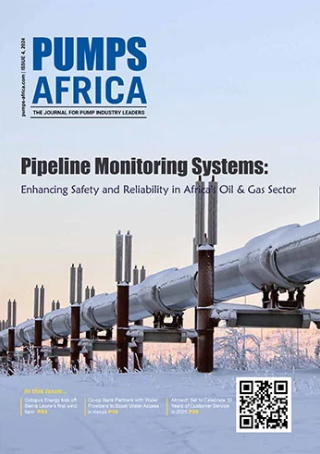During the drier months of the year, it is easy to forget that the pumping equipment at mining sites or process plants might not be up to the demands that the rainy season brings.
In fact, 90% of pump failures are from putting the wrong pump into the application. This is the view of Justin Bawden, Key Account Manager at Integrated Pump Technology, local distributors of Grindex submersible pumps. Being aware of the factors and influences of each application is vital to providing a suitable and lasting solution – which will mitigate the risk of flooding and consequent loss of life, equipment and production.
“Where dewatering activity is conducted, it is imperative that monitoring and forecasting of water inflows is done – whether on opencast or underground mines,” says Bawden. “This will allow for the necessary planning and specification of the correct capacity of pumping equipment, as well as hose sizes and materials.”
On one site, he says, a customer was able to meet dewatering requirements with just two 37kW pumps for most of the year. With the rainy season, they had to add another four of these units, based on their previous experience. He points out that Integrated Pump Technology understands these changing needs, and keeps the right pumps and quantities in stock.
“Another challenge is that mines will generally have multiple pumps located around their operations, and these are frequently moved from one location to another as needs change,” he says. “Personnel can lose track of which models and capacities are needed where – and the size and condition of the pipelines in place may not always suit the application.”
When responding to customer requests, Integrated Pump Technology is careful to ensure that the existing pipeline on site is suited to the scale of the pumping solution. This means being clear on the pipeline’s diameter, length, material of construction, age and condition – as well as valves or bends that may affect flow.
Technological innovation is also helping to mitigate risk of pump failure, he explains. The smart unit on Grindex pumps, for instance, protects them against overheating, phase rotation and phase loss. There is also the air release valve, making Grindex pumps capable of running dry for extended periods of time.
He also recommends the regular performance testing of dewatering pumps to ensure they are still operating on their rated curve. This will give added peace of mind that these units will deliver the expected duty in critical dewatering functions. The tests should also confirm the energy efficiency of the pumps, to control operating costs.
The long term benefit of such tests is significant, he explains, as timeous maintenance interventions will ensure a longer product lifecycle. As part of its service offering, Integrated Pump Technology can run these specialised tests for customers on a range of pumps. Keeping sites effectively dewatered needs quick service turnaround too, so critical parts and basic repair kits are readily available for Grindex submersible pumps, notes Bawden.







